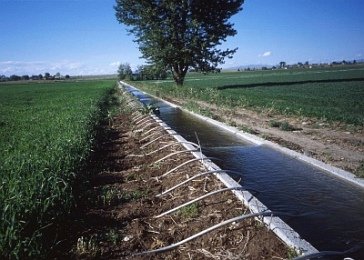Water Conservation: Reviving Rivers, Rebuilding India
Reeling under extreme water crisis for the last several years now, India has been facing the consequences of neglecting the practice of water conservation. A significant number of its over 1 billion population has been severely affected by depleting water levels across the nation.
Key highlights
- 41 rivers and its tributaries being revived
- 5055 + villages transformed
- 4993840 + people benefited
Several man-made activities, water pollution, and consistent poor rainfall rate have put immense pressure on India’s water resources. Groundwater levels, which provides for 54% of India’s total water needs, are dangerously plummeting. Rivers that were once crucial for agriculture and served as major resources for nearby villages and cities have dried up. Many farmers have committed suicide, a large portion of the population is migrating to cities from villages. There is an evident imbalance in flora and fauna, rise in unemployment and disharmony in the society.
In these trying times, The Art of Living has initiated projects to reduce the disparity between the supply and demand of water in India.
Volunteers sprung into action to revive dying rivers and lakhs of people have been benefitted from The Art of Living’s water conservation projects across India. Initial results of water conservation projects have been overwhelming and encouraging.
Impact of our work in India
The Art of Living has been working to revive the lost rivers and other water bodies in India for several years now. Many rivers in Maharashtra, Karnataka, Kerala and Tamil Nadu are now in the process of being revived to the joy of villagers.
The Art of living has also spread awareness on the practice of water conservation to several rural areas and is spearheading the initiative to spread mass-scale awareness about conserving water.
Other impacts of our work
- Several villages in India now have indigenous mechanisms for rainwater harvesting, thus creating a grassroots model for environmental sustainability.
- Using this mechanism, The Art of Living turned Kapsi, a drought-prone village in Maharashtra, India, started having a surplus of water.
- It is also engaged in restoring indigenous water supply mechanisms in rural India by harnessing village ponds, etc.
- Under the ‘Meri Dilli, Meri Yamuna’ campaign, volunteers worked round the clock to spread awareness on cleaning the Yamuna. Millions of Delhi citizens came together to support this project. The cleaning of the ghats went on for eight days.
- Art of Living has revived several lakes and ponds. This not only helps hold the water, but also increases groundwater levels. Being the natural habitat, birds and other animals also are seen to come back to the water.
- Groundwater recharge mechanisms have been reinstated leading to the availability of water even in peak summers.
- Once dependent only on rains, now farmers are sowing multiple crops because of improved water availability throughout the year, leading to increased agricultural incomes.
- Several communities united, thousands of community leaders trained, countless volunteers engaged, a silent revolution beckons.
Cleaning our water sources
“We have always used the water from the holy rivers like Ganga and Yamuna to purify ourselves, but today we have reached a point where we have to purify this water. So, we are waging a war against pollution in our rivers. The government alone cannot do it. We will have to come together.” ~ Gurudev Sri Sri Ravi Shankar
Our Approach: Methods to conserve water
- Scientific Planning
- Community Engagement
- Funding and Partnerships
- Project Management
- Desilting river beds and water bodies
- Afforestation
- Groundwater retention using low-cost gabion structures, recharge well, percolation well, water pool
- Change in cropping pattern
Need of the hour: Watershed management
The Art of Living has been undertaking water management on a large scale, especially in agrarian villages. The initiative includes educating farmers about the judicious usage of water and teaching them to construct check dams and gabin dams that store rainwater. This water is then used in the non-rainy seasons.
Hundreds of marginal farmers rely on degraded land and water resources and struggle to cope with a diverse array of agro-climatic, production and market risks. The rate of land degradation in rainfed areas in India is high, on account of soil erosion. How to produce more and better food and maintain or improve critical ecosystem services without further undermining our environment is a major challenge.
Watershed management involves the judicious use of natural resources with an active participation of institutions, organizations and people’s participation in harmony with the ecosystem.
Success Stories
“Last eight years, there was no water. Farming was dependent only on rains, hence had only one crop a year. Now, water is available throughout the year and I grow three crops a year. Earlier, my income was Rs. 30,000 to Rs. 40,000. Now, it is over Rs. 3 lakh. My family and I are very happy.”
~ Dayanand, a farmer from Kalaspur village
“My farms are next to a lake which has been dry for two decades and my bore well used to have only 1.5 inches of water where I could only irritate 1 acre of Land. Because of Dr. Lingraju and his team’s efforts, the lake is now restored, my bore well now has 3 inches of land and I can irrigate twice the amount. Eight villages around us have no water and come to us for water supply. To help, every day for 1.5 hours, I give them free access to water. Despite all that, our village is still water abundant.”
~ Muniappa, a farmer from Thyamgondlu in Karnataka
Tags: water conservation projects for students, water conservation project, water conservation in india, importance of water conservation, water conservation initiatives in india, report on water conservation in india, river rejuvenation projects in india, steps taken by indian government to conserve water.

